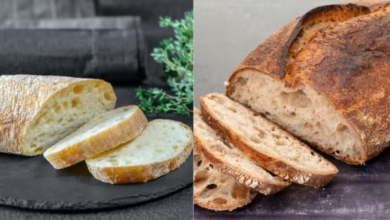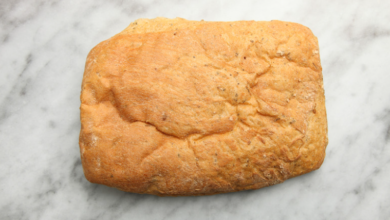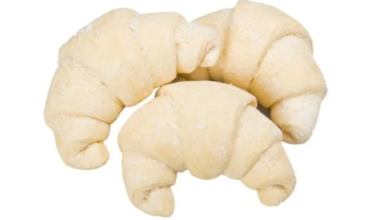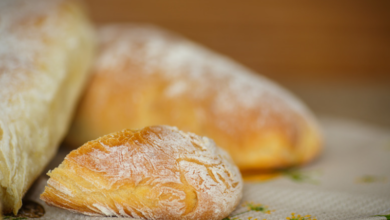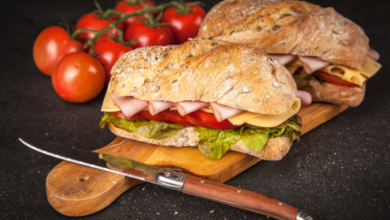Brioche Vs. Ciabatta: Not All Breads Are Created Equal

What To Know
- Ciabatta, on the other hand, is known for its open and irregular crumb with a chewy and crusty exterior.
- Brioche, with its high butter and egg content, is calorically dense and not suitable for those seeking a low-fat or low-calorie diet.
- Brioche offers a softer and richer flavor, while ciabatta provides a sturdier and more absorbent base for fillings.
In the realm of bread, two titans stand tall: brioche and ciabatta. Both hailing from different culinary traditions, these loaves offer distinct flavors, textures, and uses. In this blog post, we embark on a culinary showdown, pitting brioche against ciabatta to determine which bread reigns supreme.
Origins and History
Brioche, a French delicacy, traces its roots back to the 16th century. Its name is derived from the Old French word “brochier,” meaning “to knead.” Ciabatta, on the other hand, is an Italian bread that emerged in the 1980s. Its name translates to “slipper” in Italian, referring to its elongated and flat shape.
Ingredients and Dough
Brioche dough is rich and buttery, made with wheat flour, eggs, butter, sugar, and yeast. The high egg and butter content gives brioche its signature golden color and tender crumb. Ciabatta dough, in contrast, is leaner and wetter, containing wheat flour, water, yeast, and a small amount of salt. The high hydration level creates a porous and airy texture.
Texture and Flavor
Brioche boasts a soft, fluffy, and buttery crumb with a slightly sweet flavor. Its rich texture makes it ideal for pastries, desserts, and sandwiches. Ciabatta, on the other hand, is known for its open and irregular crumb with a chewy and crusty exterior. Its mild flavor complements a wide range of fillings and dishes.
Uses
Brioche’s versatility extends from sweet to savory applications. It is perfect for croissants, pain au chocolat, and brioche buns. Its rich flavor also pairs well with jams, spreads, and meats. Ciabatta, with its sturdy texture, is a popular choice for sandwiches, bruschetta, and paninis. Its airy crumb absorbs sauces and fillings without becoming soggy.
Health Considerations
Brioche, with its high butter and egg content, is calorically dense and not suitable for those seeking a low-fat or low-calorie diet. Ciabatta, being leaner, is a healthier option with fewer calories and fat. However, both breads contain wheat and may not be suitable for individuals with gluten sensitivities.
Final Note: The Verdict
In the battle of brioche vs ciabatta, there is no clear winner. Both breads excel in their respective domains. Brioche, with its rich and buttery flavor, is a culinary indulgence perfect for pastries and special occasions. Ciabatta, with its airy and versatile texture, is a workhorse bread suitable for everyday meals and sandwiches. Ultimately, the choice depends on personal preferences and the intended use.
Frequently Asked Questions
Q: Which bread is more versatile?
A: Ciabatta is more versatile due to its neutral flavor and sturdy texture, making it suitable for a wide range of dishes.
Q: Is brioche healthier than ciabatta?
A: Ciabatta is a healthier option, being leaner and lower in calories and fat.
Q: Which bread is better for sandwiches?
A: Both brioche and ciabatta can be used for sandwiches. Brioche offers a softer and richer flavor, while ciabatta provides a sturdier and more absorbent base for fillings.
Q: Can I make brioche at home?
A: Yes, making brioche at home is possible but requires careful attention to ingredients and kneading techniques.
Q: How do I store brioche and ciabatta?
A: Store brioche in an airtight container at room temperature for 2-3 days. Ciabatta can be stored in a bread bag at room temperature for 1-2 days.
